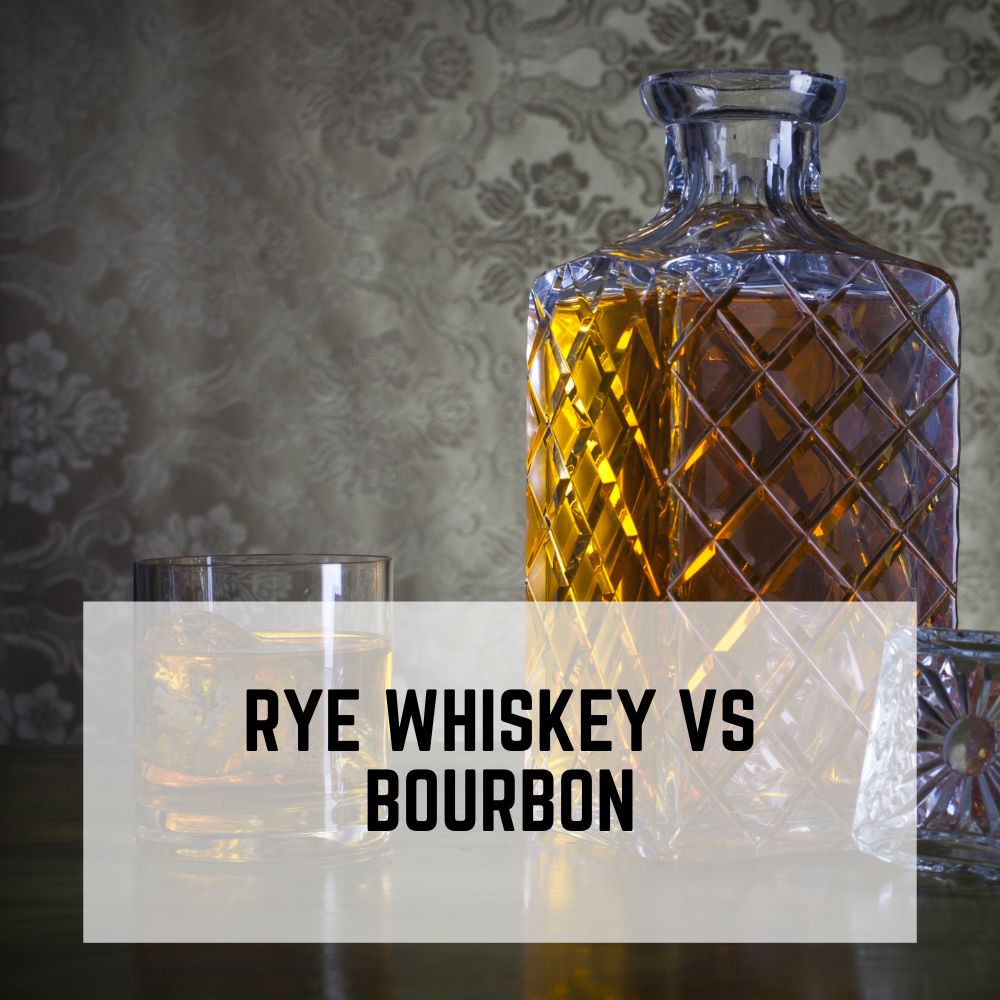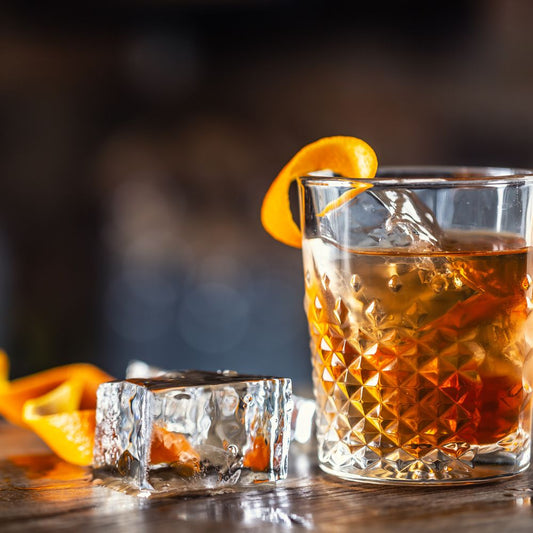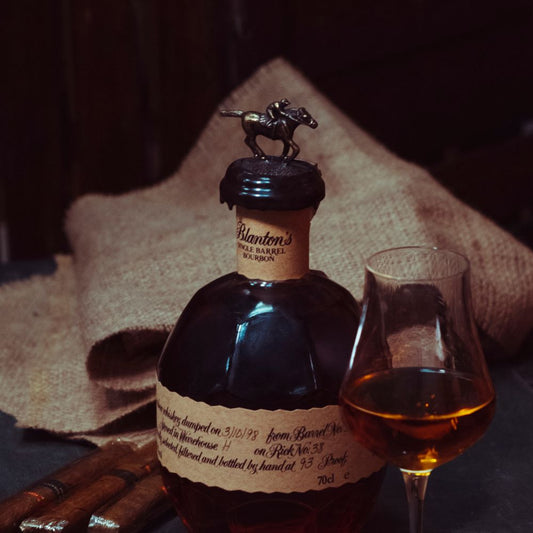Rye Whiskey vs Bourbon: What Are the Main Differences?

In the landscape of American spirits, few debates are as enduring as the one that pits rye whiskey against bourbon.
At first glance, the two may seem interchangeable; after all, they are both made in the United States, both are aged in charred new oak barrels, and both bring warmth and complexity to cocktails and sipping alike.
Yet, if you delve a bit deeper, you'll discover a world of difference in flavor profiles, historical significance, and production methods.
What Are the Main Differences Between Rye and Bourbon?
The main differences between rye and bourbon lie in the ingredients, flavor profiles, and certain aging requirements:
Ingredients
Bourbon must be made from a mash bill that contains at least 51% corn.
Rye whiskey must be made from a mash bill that contains at least 51% rye grain.
Flavor Profiles
Bourbon typically has a sweeter, fuller-bodied taste with notes of caramel and vanilla.
Rye whiskey has a spicier, more assertive flavor with nuances of fruit.
Aging Requirements
Both must be aged in new, charred oak barrels.
If labeled as "straight" rye whiskey, it must be aged for at least two years. Bourbon has no minimum aging requirement for being called "straight."
Ingredients and Regulations for Rye and Bourbon
Before we dive into the nuances, it's crucial to understand the fundamental differences in ingredients and regulations governing the two spirits. Bourbon must be made in the U.S. and must contain at least 51% corn in its mash bill—the mixture of grains used for distillation. It must be aged in new, charred oak barrels, but there is no minimum aging requirement.
Rye whiskey, on the other hand, must be made from at least 51% rye grain. Like bourbon, rye must also be aged in new, charred oak barrels. However, if it is labeled "straight" rye whiskey, it must be aged for at least two years.
Flavor Profiles of Rye Whiskey vs Bourbon
The differences in the mash bill have a profound impact on the flavor profiles of rye whiskey and bourbon. Corn, the main ingredient in bourbon, is naturally sweet, yielding a whiskey that has rich caramel and vanilla notes. Rye grain, however, offers spiciness and fruity nuances, lending rye whiskey a flavor profile that's more assertive and complex.
This spiciness makes rye excellent for cocktails like the Manhattan or the Sazerac, where its flavors can shine through the mixers. Bourbon's sweeter profile makes it the go-to choice for cocktails like the Old Fashioned or the Mint Julep, and it is often enjoyed neat or on the rocks.
Historical Context of Bourbon and Rye
The histories of rye whiskey and bourbon are woven into the tapestry of American culture. Bourbon, with its roots in the South—most notably Kentucky—is often associated with American traditions like horse racing and Southern hospitality.
Rye whiskey, which originated in the Northeastern United States, particularly in Pennsylvania and Maryland, has a history that's closely tied to the early days of American distilling. While both have undergone periods of decline and revival, they represent different aspects of American history and culture.
Aging Process of Rye Compared to Bourbon
Both rye and bourbon benefit from aging, but their aging processes and resultant varieties can differ. While both must be aged in new, charred oak barrels, the length of time and the type of oak can influence the end product.
Because bourbon is often sweeter and fuller-bodied, it can withstand—and often improve with—longer aging, which imparts additional complexity and flavors like dark fruit, tobacco, and leather.
Rye whiskey, being spicier and more assertive, may not always benefit from extended aging, as excessive wood influence could overpower its subtler nuances.
The Craft Movement
In recent years, the craft distillery movement has expanded the horizons for both rye and bourbon, introducing experimental methods and varieties. Craft distillers are playing with different grains, yeast strains, and aging methods, creating unique and innovative expressions.
This movement is blurring the lines between traditional rye and bourbon characteristics, but it is also enriching the landscape, offering whiskey aficionados a broader range of options.
Conclusion
While rye whiskey and bourbon share a lot of similarities, their unique characteristics define them as distinct spirits. From the mash bill to the flavor profile and historical context, each offers a different experience.
Whether you are a cocktail enthusiast or a purist who prefers your whiskey neat, understanding these differences between these two kinds of whiskey can enhance your appreciation and enjoyment of these quintessentially American spirits.
FAQs
What are some popular rye whiskey and bourbon brands?
When it comes to rye whiskey, some well-known brands include WhistlePig, Sazerac, and Bulleit. These brands offer a variety of rye whiskey options for you to explore and enjoy. In the world of bourbon, there are several popular brands such as Maker's Mark, Jim Beam, and Buffalo Trace. With so many options available, you're sure to find a brand that suits your tastes.
Are there any notable cocktails that feature rye whiskey or bourbon?
Yes, there are several classic cocktails that showcase either rye whiskey or bourbon. For rye whiskey, consider trying the Manhattan or the Old Fashioned. Both of these cocktails offer a delicious combination of flavors that highlight the unique qualities of rye whiskey.
Bourbon is also featured in many cocktails, including the popular Mint Julep and the Whiskey Sour. These cocktails not only taste great but also offer a refreshing way to enjoy your favorite bourbon.
What makes a whiskey qualify as high rye bourbon?
A whiskey can be labeled as a high rye bourbon when it contains a higher percentage of rye grain in the mash bill compared to a typical bourbon. While traditional bourbon consists of at least 51% corn, a high rye bourbon will have a higher proportion of rye, usually around 30-35% or more.
This increased rye content adds a spicier, more complex flavor profile to the bourbon, making it appealing to those who enjoy bold flavors in their whiskey.
Get recipes & ideas delivered to your inbox
Sign up for our newsletter to learn about releases, exclusive deals and more!
Recent Articles
- 12 Best Whiskies for an Old Fashioned
- 30 Popular Bourbons You Can Find Almost Anywhere
- What is Whiskey Made Of?
- The Science of Smoke: How Smoking Enhances Your Cocktails
- How to Pair the Right Wood Chips Your Smoked Cocktail
- How to Create a Home Bar Setup
- 10 Best Whiskeys to Stock Your Home Bar or Cart With
- Essential Bar Tools for Smoking a Cocktail
- What Are Good Smoked Cocktail Garnishes?
- Rye Whiskey vs Bourbon: What Are the Main Differences?



